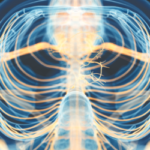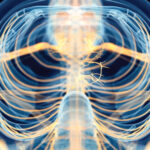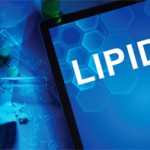Using targeted lipid mediator metabololipidomics, Dr. Serhan and his research team were able to identify lipoxins, Rvs and protectins produced by both human and mouse vagus nerves. They found that human vagus nerves produced SPMs on stimulation that differed from mice. They also found that electrical vagus nerve stimulation increased SPMs in both human and mouse vagus nerves, as did incubations with Escherichia coli. And, electrical vagus nerve stimulation increased SPMs and decreased PGs and leukotrienes.7
“These results,” said Dr. Serhan, “provide direct evidence that electrical stimulation of the human vagus [nerve] reduces eicosanoids and increases pro-resolving mediators, including the resolvins, protectins and maresins, that stimulate resolution of inflammation and infections.” He added that this opens the potential for developing bioelectric medicine with clear molecular mechanisms of action in activating resolution of inflammation via vagal stimulation.
Based on his lab’s work and other research by colleagues, Dr. Serhan said enormous potential exists for not just resolving inflammation in a whole host of diseases, including arthritis, and also tissue protection for the myocardium, kidneys, lungs, corneas and retinas. “Tissue repair [and] wound healing are areas we’re studying right now, and we’re finding SPMs are 100–1,000 times more potent than NSAIDs [non-steroidal anti-inflammatory drugs] in these [mouse] models.”8
Another area that holds promise, said Dr. Serhan, “and which came as a big surprise to us,” was infection control. He said SPMs may help combat bacterial sepsis, pneumonia and viral keratitis.
A Sheepish Admission
George Schett, MD, professor of internal medicine in the Department of Medicine at the University of Erlangen-Nürnberg, Erlangen, Germany, has his own pet nickname for something he is investigating. “By chance, we began looking at interleukin (IL) 9, which is actually the black sheep of the cytokines,” he explained.
Dr. Schett said that although lipid mediators, such as resolvins, have been associated with the resolution of inflammation, research about the role of cytokine pathways that manage them has been largely ignored. “This was certainly true for IL-9, which was first described in the late 1980s as a cytokine with many promising biological roles in the immune system.”9
The good news, Dr. Schett said, was that interest in IL-9 has re-emerged, including in his own lab and in other research initiatives. Specifically, he said, researchers are finding IL-9 plays a role in regulating inflammatory immunity and the transcription factors that activate the IL-9 gene in IL-9-producing cells, which are essential for the initiation of the resolution process.


